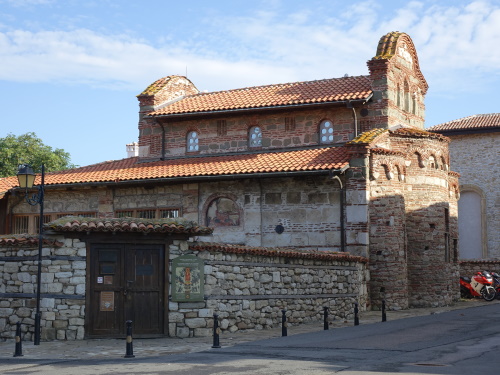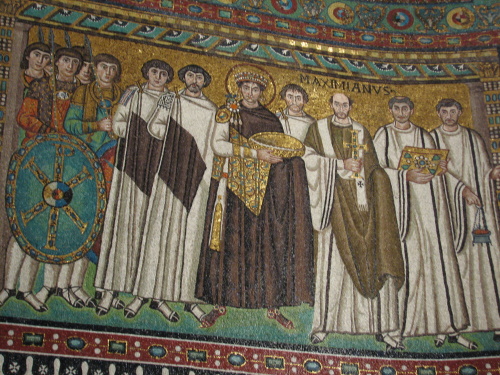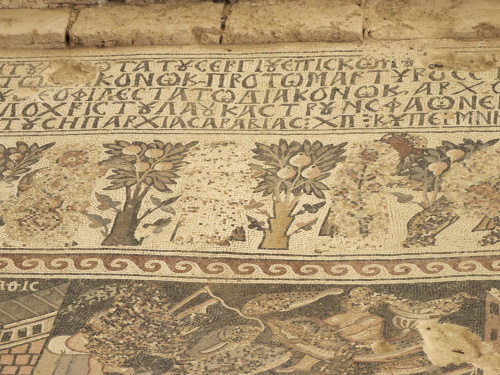Blog Connections
Byzantine
While prepping for my upcoming trip to Greece, I updated the connections of the WHS I am about to visit as I always do. Common among the Greek WHS is a connection called Byzantine Empire and Civilization. At 57 sites, it’s long and most entries didn’t have an explanation. I added them and started wondering about what ‘Byzantine’ really means. It’s a term that is easily used, I think we all have an image in our mind of what Byzantine architecture (domed churches) or Byzantine mosaics and murals (lots of gold) look like. But which are the best and most typical examples?

Political Byzantine
The Byzantine Empire spanned about 11 centuries, governing constantly changing parts of South Eastern Europe and the Levant from Constantinople. So several WHS that derive their OUV from a different culture, ended up being part of the Byzantine Empire at some time. The Byzantines didn’t have much influence here. However, they might still be named in overhyped statements like “ruled successively by the Phoenicians, Greeks, Carthaginians, Romans, Byzantines, Arabs and the Order of the Knights of St John”. Examples are Damascus (Umayyad), Ani (Armenian), and Valletta (Crusader Knights).
Byzantine architecture
One step up from political rule only, Byzantine fortifications seem to have been a reasonably common addition. They can be found at Dougga, Aleppo, and Crac des Chevaliers.
The most recognizable examples of Byzantine architecture are its Churches, with high domes and round arches. The most outstanding examples are named as the Chora Church and Hagia Sophia in Istanbul, San Vitale in Ravenna, and St. Mark’s in Venice. I was surprised to see St. Mark’s here – but “…a centrally planned Byzantine model reflected the growing commercial presence of Venetian merchants in the imperial capital as well as Venice's political ties with Byzantium.”
Other notable examples are Hagios Demetrios and the Church of the Holy Apostles in Thessaloniki (the latter being “an archetypal structure of the late period with its exterior walls intricately decorated with complex brickwork patterns or with glazed ceramics”), Saint Catherine's Monastery on Mount Sinai, the Brontochion Monastery in Mystras, and the churches of Daphni, Hossios Luckas and Nea Moni of Chios.

Byzantine art
Byzantine art is mainly expressed in frescoes, mosaics and icons. It was both religious and imperial, and often combined the two: portraits of Byzantine emperors can be found in churches next to images of Christ. Photo 2 shows Maximianus inside Daphni church, San Vitale in Ravenna includes important mosaics of Justinian and his empress, Theodora.
Impressive mosaic art of Byzantine origin can be found in Saint Catherine's Monastery, Umm er-Rasas (photo 3) and the church of Hagios Demetrios in Thessaloniki (“executed in a remarkably abstract style”).

Inspired by the Byzantines
The Churches of Moldavia and Echmiatsin were ‘only’ inspired by the Byzantines and probably shouldn’t be in this connection at all. However, some sources seem to consider all Christian monuments built between the 4th and 15th centuries in the wider region as Byzantine - no wonder it has produced such a long and diffused list of connections. Many later Eastern Orthodox churches (in Greece, Bulgaria, Russia, etc.) are influenced by the Byzantine tradition as well, and it is also visible in the legacy of Norman Sicily in Palermo.
A final mention goes to the frescoes in the Sopoćani Monastery church. They represent the work of the best artists of that period who were unable to work in the territory of the Byzantine Empire (Constantinople at the time was in the hands of the Crusaders) and found refuge at the court of the Serbian king.
Sources used: Byzantine art, Byzantine architecture, various articles at Smarthistory, AB evaluations of the named WHS.
Els - 24 July 2022
Comments
Kyle 25 July 2022
For readers who wish to compliment their visitor experience to Byzantine Sites I would recommend Guy Gavriel Kay's duology of novels "The Sarantine Mosaic" which is inspired by the time period/reign of Justinian and Theodora. The main character is a mosaicist.